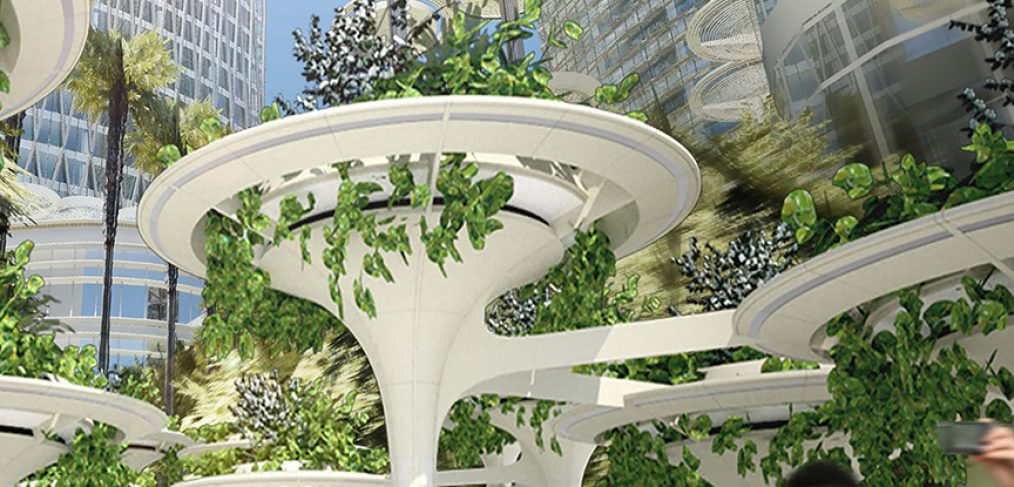
Green Breakthrough: the new invention behind sustainable temperature control
CallisonRTKL’s sustainable design expert Pablo La Roche shares his latest innovation on creating thermal comfort
90 percent of our time is spent indoors, so it makes sense that we gravitate toward the outdoors when given the chance. But while investing in outdoor amenities seems like a no-brainer, the impacts of a warming planet make it a challenge; just because we build it doesn’t mean that they will come.
With ever-growing technological advances, it’s easy enough to heat and cool indoor spaces. The challenge for architects and designers, then, is how to replicate those mechanics outdoors in a way that is both sustainable and aesthetically pleasing.
That’s where our new innovative design enters the picture.
Over the past two years, we have been developing the “Xylem”— a first-of-its-kind technology used to regulate outdoor thermal comfort through shading, air movement, water circulation and a vegetated roof. The Xylem facilitates a viable, self-sustaining approach to managing the temperature outside. By maximizing the cooling impact of the green roof, it can reduce the perceived temperature by an incredible 5°C compared to shaded areas.
We named the Xylem for the compound tissue cells of the same name that exist within plants and wood fibers that circulate water and direct nutrients upward. But it’s more than just named for the cells; in this case, design replicates nature. The elevated planter circulates water from the base upward through its structural core and conductive cladding to create radiant cooling in the area surrounding the Xylem.
Created where the art of architecture and the science of Performance-Driven DesignSM collide, Xylem facilitates natural ventilation and outdoor comfort in a passive, cost-effective and scalable way that will be useful in ever-developing global cities. It’s estimated that by 2050, 70 percent of the world’s population will live in urban environments. This statistic will force all of us to ask how to best mitigate environmental concerns of increased urbanity and increase the comfort of living in cities by decreasing the urban heat island effect— a question that was much of the inspiration for the Xylem.
A single Xylem pod provides thermal comfort at the user level, while a cluster can improve quality of life on a larger scale. When combined into a community of clusters, the Xylems significantly reduce the amount of paved surface in contact with solar radiation, also mitigating the heat island effect. It can be applied in multiple outdoor environments, including plazas, markets, playgrounds, beaches, outdoor malls and community centers. It can also be modified for specific microclimatic conditions, and its form—conceived based on optimal performance, manufacturing and fabrication technologies, and aesthetics—is ideal for rainwater harvesting and storm water mitigation.
The Xylem is no longer just our dream. We are expecting to begin construction on the project in September 2017 in Jakarta, Indonesia and hope to complete the flagship by the end of 2019. Seeing the Xylem become reality is a huge step forward in increasing the comfort of outdoor spaces while also promoting sustainable and green design in growing urban centers.
